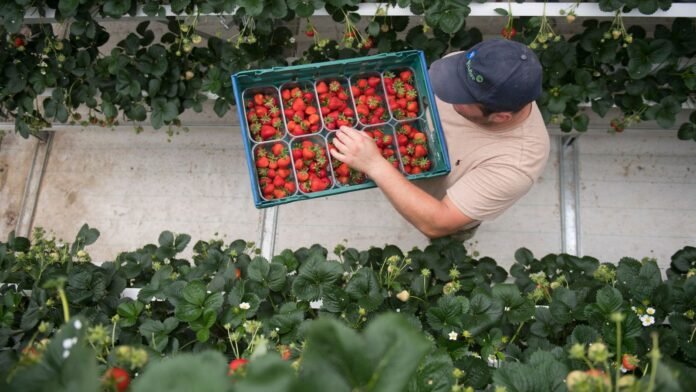Inflation is the economic phenomenon that consumers and politicians feel most directly, which makes news of a 3.8% increase in consumer price inflation (CPI) in July no surprise to shoppers, and unwelcome confirmation of a trend for the chancellor of the exchequer.
If there is good news, it is that the increase was fairly narrow, confined to a few “divisions” of spending.
The bad news is that one of them was food and drink inflation, which at 4.9% continues to rise at a faster rate than overall CPI.
After the rampant price rises that followed Russia’s invasion of Ukraine, food inflation had actually fallen below the headline rate this time last year. Since the spring, however, it has crept back above CPI, and the gap is widening.
A few staples jump out from the underlying data: beef and veal up 24%, butter almost 18%, coffee the same, milk by more than 11% and bakery goods more than 7%.
Ask growers and the supermarkets why, and you get a similar explanation: employment costs. The rise in employers’ national insurance and the threshold at which it is paid, allied to a 6% increase in the minimum wage, has pushed up the cost of production and sales.
A major strawberry grower told Sky News his wage bill has risen 11%, and those labour costs make up two-thirds of the price of his crop. That leaves him with no choice but to pass it on to his customers.
Read more:
Energy bills expected to rise from October
Something odd is happening in the markets
Consumers have some protection from the robust competition in the supermarket sector, with discounters Lidl and Aldi holding down prices that bigger players have to follow, but they all face the same wage pressures.
The other drivers of high prices were restaurants and hotels, also affected by labour costs, and airfares, which had a disproportionate impact on the overall figure, thanks to a change in the timing of school holidays.
What about interest rates?
Inflation is forecast to continue to rise to 4% – double the Bank of England target – in the autumn before falling back next year. The question in the meantime is what the Bank will do with interest rates.
The combination of above-target inflation and rising unemployment is not classically a formula for interest rate cuts, but that is what happened earlier this month when another quarter of a percentage point was shaved from the base rate.
Following these inflation numbers, the odds of a further cut at the next meeting in September have lengthened, but another may come before the year is out if the Bank believes its inflation forecast, and that a faltering economy needs some help.
Also coming in the autumn, a budget that gives Rachel Reeves a chance to demonstrate that her twin goals – growth and stable public finances – are not incompatible.






